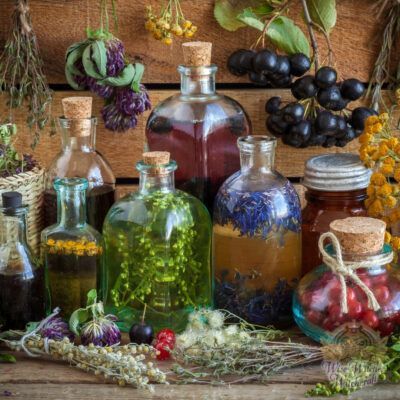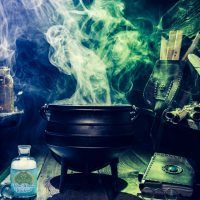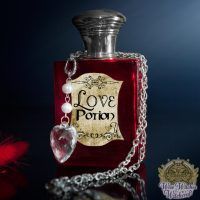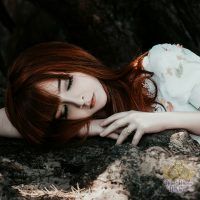Real Tea Magick Potions that Work
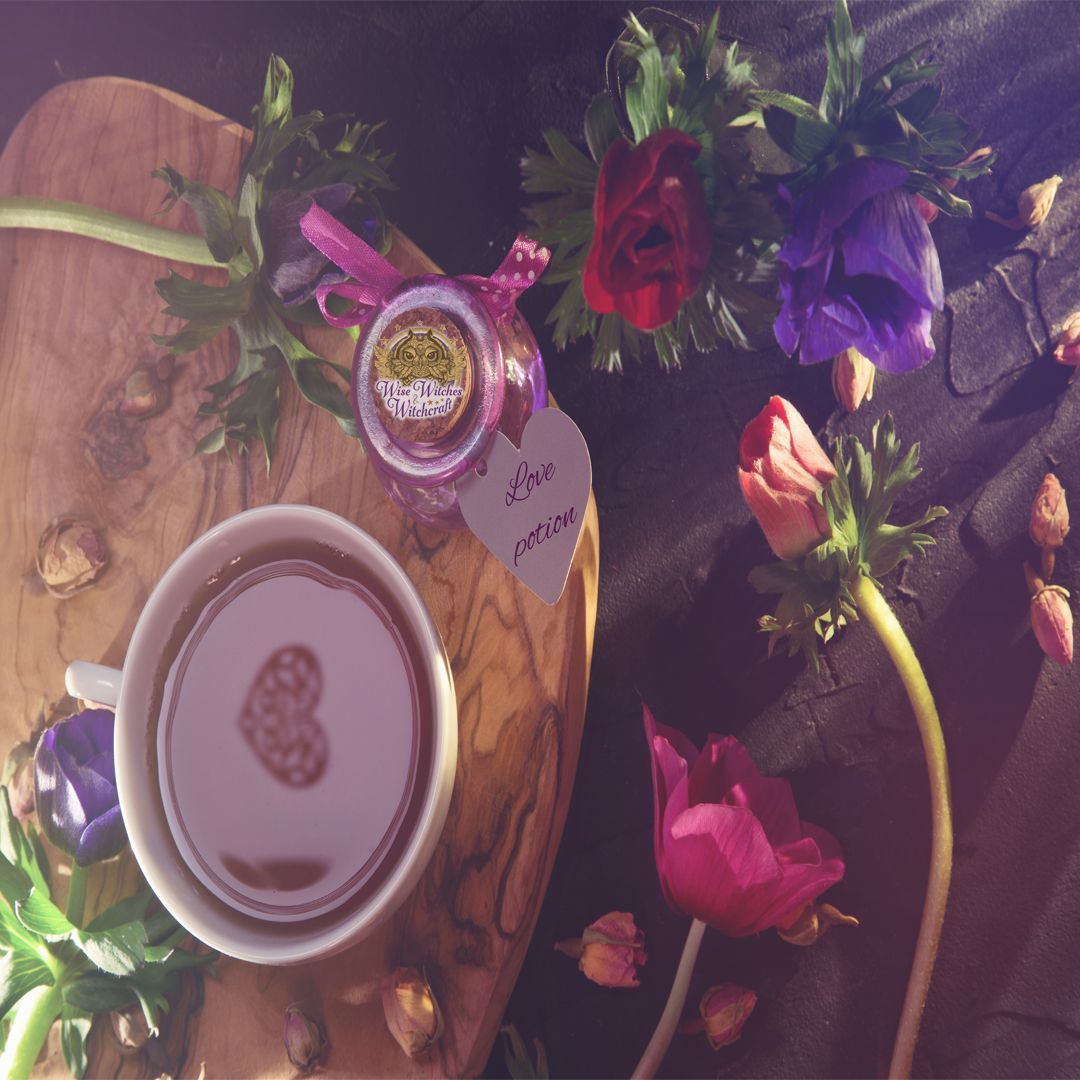
“A cup of tea would restore my normality.”
– Douglas Adams
Potions are one of the simple tools in the Witch’s kit. Magic brews are usually pretty easy to make and utilize many components we have handily in our kitchen or pantry. Mythologically, all manner of powerful beings made potions from dragons to fairies and wizards. The most popular elixirs were love potions (called a Philter) and health.
Real Magick Potions and Brews
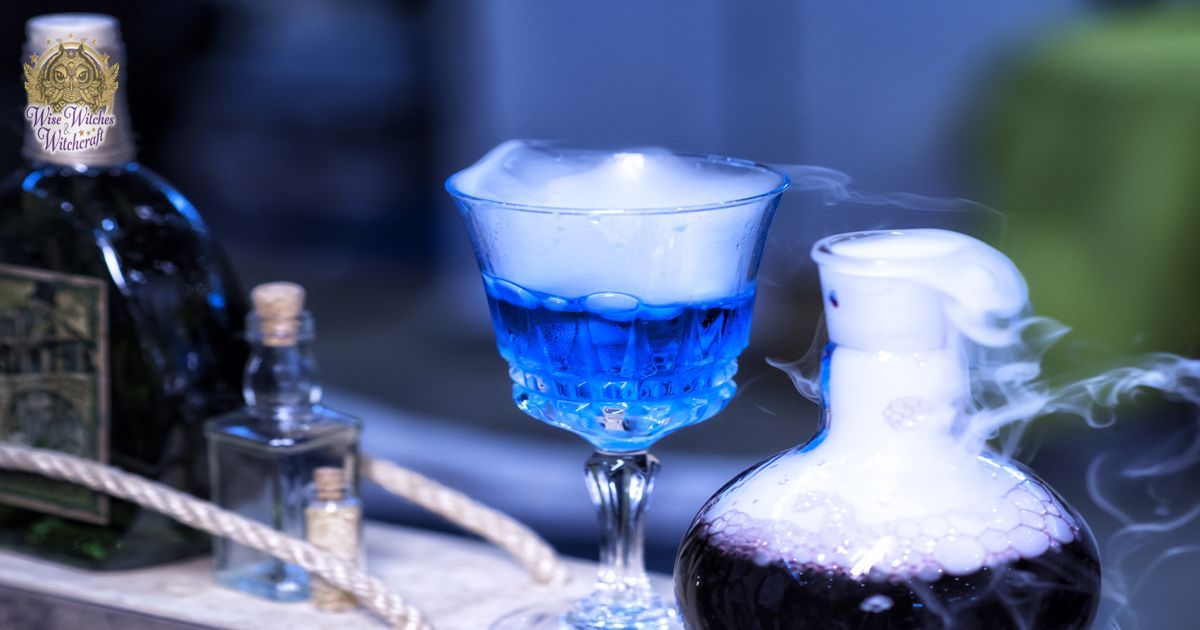
The word potion simply means to drink – pretty straight forward. The potions we read about in history often have wild components, some of which appeared to be words with no meaning. How about some Bats blood and snake skin stirred by a bird’s feather for your pleasure? While it is true that early potion creation did include unsavory ingredients because of their believed magical ability, it is also true that some of these recipes were ruses. There were some witches who preferred to keep their blends a secret from wandering eyes who might use their powers incorrectly. So they created a kind of code where beetle dung could well mean something innocuous as basil!
Types of Magic Potions
There are all types of sub-classes of potions. These include:
Brews: This word is synonymous with potions, since potions are generally brewed up. Brew can also mean something more hardier like a soup.
Draught: A beverage aged in a barrel like wine.
Elixir: This was an Alchemical term used to describe mixtures for long life and health, as well as a magical mixture that would turn plain metal into gold.
Infusion or Tea: Infusions take a group of components and steep them in a liquid. This liquid need not be water. Beer was often used by early healers, for example, because it was safer than water. Other options include wine, juice, vinegar and oil.
Philter: Philter comes from the Latin word for beloved: This was the traditional term for love and passion potions.
Tonic: This is a potion meant for keeping your body invigorated, refreshed and well-tuned like a car engine.
Using Tea in Magick Potions
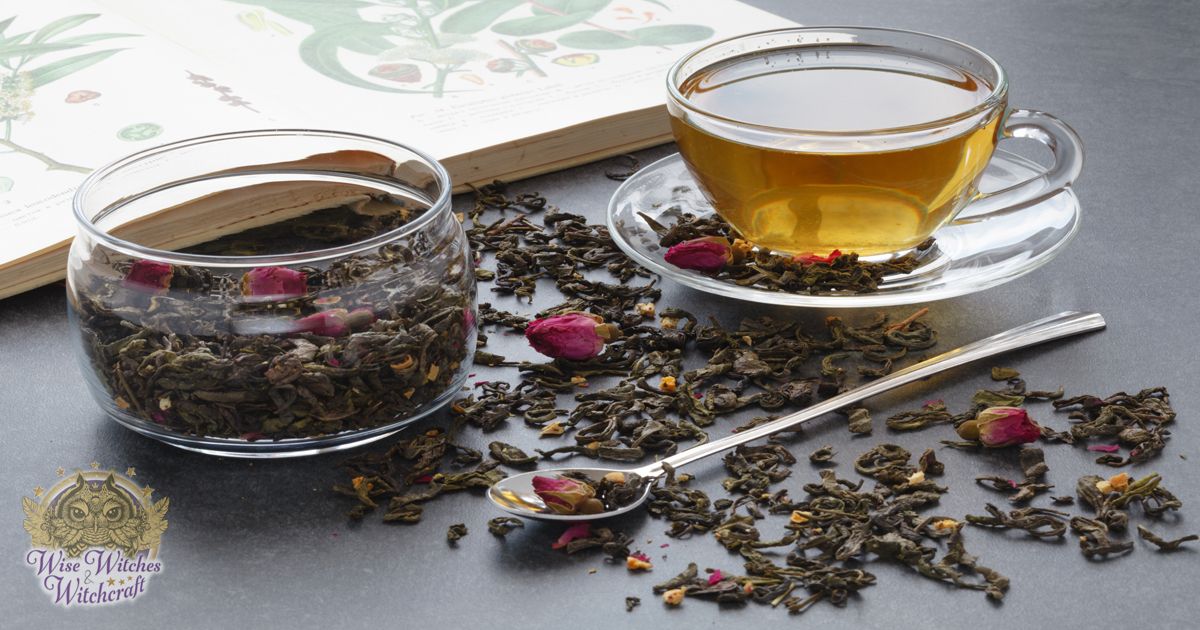
Stories from the Far East tell us that Tea originated by one of the most historically common methods: accident. Apparently the Chinese Emperor Shen-nong had a tea leaf fall accidentally into his cup in 2737 BCE. Tasting the resulting substance, he became enamored by the brew and ended up dedicating his life to making unique tea blends and discovering their magical qualities.
Types of Tea
If you walk down the tea and coffee isle of a local supermarket, you will see there are a lot of different tea offerings. Not everything that is packaged as “tea”, however, is a tea in the truest sense. Actual tea comes from the Camellia sinensis plant, or plant parts. However, you will also find warm blends such as:
Flavored Tea: These blends usually have actual tea as a foundation with other herbs or spices added like cinnamon or mint.
Herbal Tea: You steep this in the same way as regular tea, but it’s made of an herb or herb blend rather than tea leaves proper. One that’s familiar to many people is chamomile. Important: If you are making the potion for consumption, make sure your herbs are food safe and that the person consuming it has no allergies to them.
Scented Tea: This may or may not be “real” tea depending on the base plant leaf. For example, making Jasmine tea entails placing Jasmine over top of regular tea leaves. This is aged so that the tea leaves absorb the jasmine oils. When heated, that wonderful scent emerges. This kind of tea is very useful in magical aromatherapy.
Generally, there are four main classes of tea. Their classification comes from how the plant is grown, harvested and processed:
Black Tea: Black tea gets its color from a longer fermentation process. It has a strong, slightly smoky taste and very earthy undertones. Some common black teas include Kenyan, which has a full body, Assam – bold, Darjeeling – herbaceous and Ceylon – brisk and mildly spicy. The color of this tea gives it associations with the Earth Element (while its processing correlates to Fire) and the seasonal characteristics of Winter. Other magical associations include the Sacred Masculine, bravery, energy and banishing. Black tea is also found in some money spells.
Green Tea: The processing time for Green Tea is shorter than that for black. It’s harvested later than White Tea. Green tea has a variety of flavor notes some of which are fruity, nutty, flowery or mildly sweet. Some common green teas include Sencha, which is the most common. There is also Gyokuro with less astringency, Matcha – used in traditional Japanese Tea Ceremonies, and Hojicha – a roasted, light flavor. The lovely pale green color of this tea aligns it with the Air Element and Season of Spring. Other magical associations include the Fire element (from processing), growth, health, immune support, longevity, passion and prosperity.
Oolong Tea: This is somewhere between black tea and green tea in its level of oxidation. Some of the flavors describing Oolong include toasty, lightly sweet, well-rounded body and lightly floral or herbal. The color is a golden brown hue. Varieties of Oolong include Rougui which is dark and spicy, Huangjin Gui – gold and fragrant, Dancong – scented teas, Pouchong – very floral, and Jin Xuan – milky. The yellow-light brown color of Oolong can represent the season of late summer. This is a more feminine tea suited to meditation. Its magical qualities include inspiring romance, deepening friendship, calming, focus and deterring anxiety.
White Tea: A very delicate tea with minimal processing. White tea is hand picked and quickly dried for freshness. The flavor of white tea is gentle with citrus or fruity notes and sweetness like honey. Varieties include Silver Needle – smelling of honeysuckle, White Peony – clean, floral and fruit notes, Monkey Picked – sweet and buttery and Darjeeling White – elegant and sweet. White tea brews up with a very pale golden hue (most varieties). This is a color that can be associated with either the Air or Aether Element. Magically it contains energy for clarity, fertility, balancing the chakras, psychic aptitude, prayerfullness, the inner child, renewal and blessings.
How to Make Magic Potions with Tea
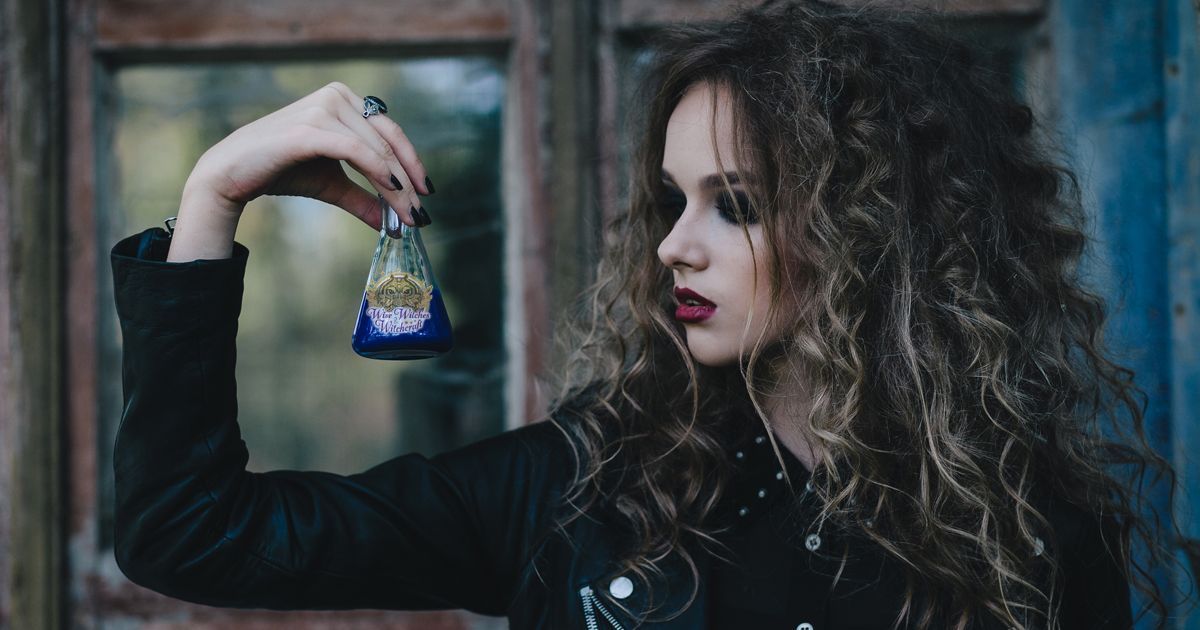
Everything in Kitchen Witchery has some basic helps and hints that make your results more successful. Making tea is no exception even tho you might think nothing of just tossing a tea bag into hot water and having at it! One tip from an old friend was that gently warming your cup before pouring the tea therein makes a difference somehow. Testing says: We agree. Try it out and let us know your feelings.
Tip One: Don’t over-boil your water. Delicate teas can actually be damaged by water that’s too hot. About 158F is ideal.
Tip Two: Pot vs. Kettle or Both? A tea kettle is specifically for boiling water, while a tea pot is a vessel for steeping your magical brew. Stainless steel kettles are the most popular for boiling water because they don’t change the neutral flavor in any way. With pots you have more options. Glass is great if you have a blossoming tea so your guests can see the visual display (and the symbolic value of “blooming” is nice too). Porcelain and ceramic pots seem well suited to green and white tea. Cast iron pots last forever but it’s best to use them for a sturdy tea that won’t be harmed by the heat they hold. Clay is one of the most traditional types of tea pot that slowly soaks up the flavor of the tea it holds. It’s suited for the teas with higher oxidation levels. Sadly that absorption means you must really like one type of tea, or have different pots for each of your favorite blends.
Tip Three: Watch your brewing time. Most tea comes with instructions on the best amount of time for infusing the product. The average is 10-15 minutes. Exceeding steeping times can make for bitter tea.
Besides choosing your tea according to the overall goal for your finished potion, what other methods can you bring to your effort for increased energy?
Charging: Placing the potion beneath the light of the moon or sun for a symbolic amount of time.
Crystals: Add a sacred stone to the potion that vibrates with the same theme (like using pink quartz for love). Just be sure that the stone is clean and contains no potential toxins that could leach into your brew.
Incantations: Create a verbal component that you recite while making the potion.
Libation: Pouring a bit of the potion out to the earth by way of an offering.
Prayer: Asking your patron or patroness Divinity to bless your effort (perhaps by holding it skyward as you pray).
Processing: Stir the potion clockwise for positive and growing energy, counter clockwise for decreasing and banishing energy. Use a blender to “whip up” the vibrations. Heat the potion for warmth or cool for clarity.
Sacred Space: Invoke a sacred space around the region in which you create your potion.
Timing: Make the potion during auspicious magical times of day, moon phases or astrological cycles.
Visualization: Envision sparkling light of a symbolic color filling the potion all the while you’re making it.
There are many other ways you can use tea in magic. Because it’s dry, consider adding it to incense or potpourri. Look it as a potential component in your charms and amulets because it’s light and easily transported. Place it on your altar to honor suitable divine visages.
Tasseography: How to Read Tea Leaves
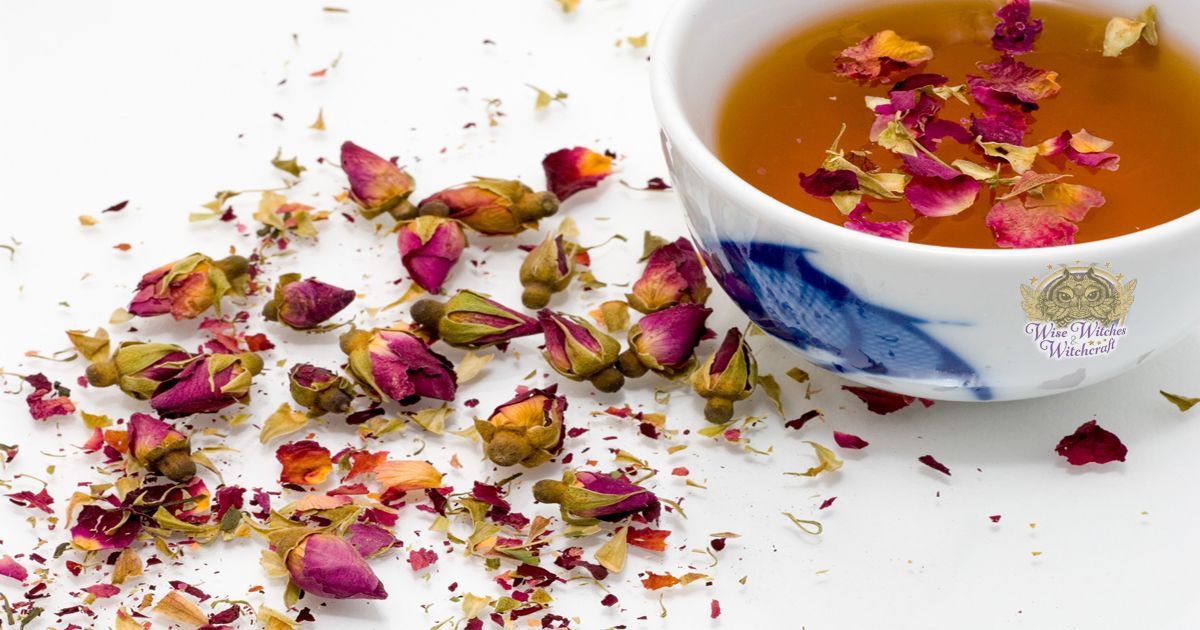
Of course the most commonly known application for tea leaves in magic is divination. The art of Tasseography, or tea leaf reading, has a long history but became popularized in the Western world during the Victorian era. At noon time lunch a lady might have a guest put a pinch of tea leaves into a cup, pour water over it and allow it to steep for about three minutes. Next, the querent should drink all but a bit of the tea leaving the leaves in the bottom.
Now the remaining liquid gets swirled in the cup, which is then up-righted. Once any liquid drains out it’s time to read the fortune. Depending on who you ask, images in the leaves that appear near the rim are closest to NOW, while the bottom images have to do with the distant future. The leaves that stay mid-cup have to do with messages for the near future.
The reader looks at the patterns in the teacup similarly to how you might scry for images in clouds or reflective surfaces. There may be letters (usually considered initials), numbers or any number of rough pictographs present. Each of these symbols has a value all its own first. Then all of the symbols are read as a whole. Here are a few simple interpretations:
A line: Travel. The longer the line, the longer the journey.
Arrow: Look at the symbol to which the arrow points. Pay attention.
Bell: News.
Bird: Freedom.
Circles: Money or gifts.
Clouds: Trouble.
Coin: Financial change.
Door: Openings or closings.
Eye: The “site”.
Flower: Growth, hope.
Hand: Friendship or help.
Heart: Good things including love.
Horseshoe: Luck.
Kite: Wishes.
Needle: Recognition.
Question Mark: Uncertainty. Use Caution.
Star: Happiness.
It should be noted that different readers often associate symbols in their own personal way. This may have given rise to specially designed Tasseography cups in the early 20th century. These were quite elegant, having all manner of interior designs. One had images for the Zodiac signs and another playing cards (like Tarot). This made reading the leaves much easier. If a leaf or a tiny bundle landed on a Joker, for example, that portended happiness and laughter. Over time these tools have become family heirlooms, often passed down through the generations. Now wouldn’t it be nifty to pour a tea potion into one of these cups and see what magic emerged?
The Takeaway
There are many substances that you can use as a foundation for making your magical potions. Tea just happens to be one that is inexpensive, readily available and has tons of options in commercial form. For the time-pressed Witch, this is a great benefit. Just like any other magical endeavor the key to success is that what you are making (and doing) makes sense to you. Keep it meaningful, and keep a kettle on your stove just in case. It’s tea time!

